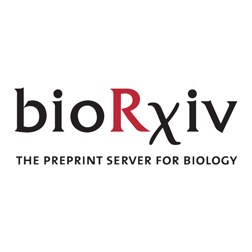
vlorenzi
@vlorenzi3
Followers
463
Following
2K
Media
5
Statuses
232
PhD student at @emblebi and @sangerinstitute she/her
Cambridge, England
Joined August 2019
incredible work by the one and only @FadiniAli.
Structural biology is in an era of dynamics & assemblies but turning raw experimental data into atomic models at scale remains challenging. @mhli41 and I present ROCKET🚀: an AlphaFold augmentation that integrates crystallographic and cryoEM/ET data with room for more! 1/14.
0
0
4
🚀 The 2025 update of Biointerns is here!. A refreshed resource for #undergrad & #master’s students seeking #paid #academic #internships in #biosciences. Big thanks to @FraLotito (concept) & Antonio (maintenance) for making this possible!.
biointerns.github.io
1
2
5
RT @TimCoorens: Very happy and excited to announce that I'll be starting my own research group at @emblebi! The group will focus on lineage….
0
31
0
This research was only possible thanks to the support of @wellcometrust @Hugodecaproject and those donating samples to research studies. A massive thank you also goes to the tireless work of clinical staff 🙏.
0
0
3
💡We hope this comprehensive map will inspire further research into human reproductive development and foster breakthroughs in reproductive disorders. The full preprint is available here
biorxiv.org
The human reproductive tract plays an essential role in species perpetuation. Its development involves complex processes of sex specification, tissue patterning and morphogenesis, which, if disrupt...
1
0
1
👉 Finally, we identified which endocrine disruptors and drugs could potentially alter reproductive tract development. We’re currently validating some of these effects using organoids (shoutout to @magda_mareckova @Elias_RuizMor charlotte @Dabrica !). [10/10]
1
0
1
👉 What factors regionalise the Müllerian and Wolffian ducts into distinct organs? By adapting OrganAxis from @YayonNadav, we modelled gene expression continuously along the length of these ducts to see how they are patterned into their final tissues. [7/10].
1
0
1
📢Excited to share our work on @biorxivpreprint "Spatiotemporal map of the developing human reproductive tract at single-cell resolution"! Beyond grateful to our amazing team @ceci_icoresi @LuzGarAl @roserventotormo @MarioniLab and collaborators for their contributions. 🧵[1/10].
4
13
37
RT @AIClubBioMed: 📢Next Thursday 7th November! . 2 fantastic talks on the theme of "AI for single-cell biology" followed by pizza and net….
0
2
0
RT @PengHeAtlas: I’ve opened two more positions in my lab for both junior and senior RAs—no PhD required. 🌟 Spread the word!.🔬 Dry Lab: htt….
0
33
0
RT @APredeus: Our team has been working on a pipeline to reliably detect bacterial reads in human RNA-seq data - incl. various single cell….
0
3
0
RT @anaconesa: Second day of the @SEBiBC_es conference starts with @LuzGarAl , CellphoneDB developer talking about her impressive work on c….
0
4
0






